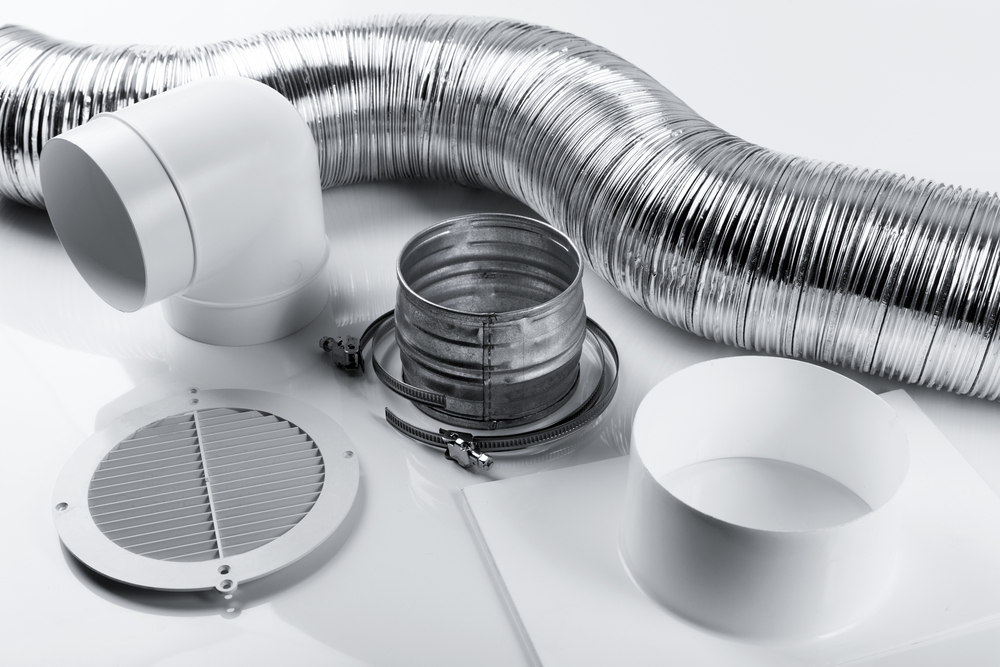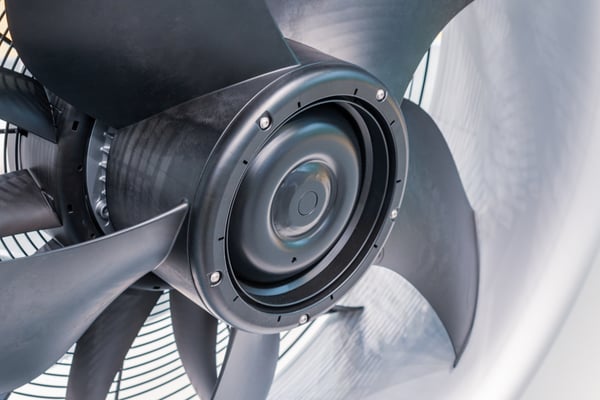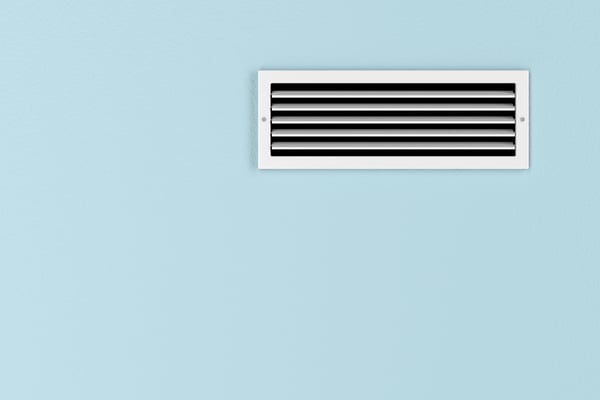HVAC Design for COVID-19: Positive and Negative Pressurization

Controlling the direction of airflow is very important when the air in a building may contain harmful particles. According to health authorities, coronavirus transmission happens mostly at short distances. When an infected person coughs or sneezes, others may be exposed to droplets with the virus, especially within six feet. However, airborne transmission cannot be ruled out: smaller and lighter droplets may stay airborne, traveling more than six feet from the source.
HVAC engineers can control air movement by applying a basic principle of physics: air moves from higher-pressure areas to lower-pressure areas. Airborne droplets with SARS-CoV-2 are unlikely to move into a room with higher air pressure than the source. Depending on the application, the ventilation system in a room can use positive or negative pressurization:
- Positive pressurization means that a room has a higher air pressure than its surroundings.
- On the other hand, negative pressurization indicates a lower air pressure than adjacent areas.
In both cases, the pressure is measured as a positive value, since negative pressure makes no sense from a physical standpoint. The terms positive and negative are defined with respect to their surroundings, and they don’t refer to absolute pressure (always positive).
Configure your HVAC system to improve air quality and prevent COVID-19.
By upgrading your HVAC system for COVID-19 prevention, you can create safer indoor conditions in your building. This will help resume normal operation when the stay-at-home orders are retracted and buildings can reopen.
When Is Positive Pressurization Used?
Positive pressurization is used to keep air from other areas out of a room. For example, if you have a storage room with sensitive materials, positive pressurization can be used to achieve better control over indoor air conditions.
- Hospitals normally use positive pressurization to treat patients with weakened immune systems.
- This prevents air leakage from other areas into the room, protecting the patient from airborne pathogens.
To achieve positive pressurization, the air supply rate must be higher than the exhaust rate. For example, if you provide 1000 cfm to a building area while exhausting 800 cfm, it will achieve positive pressurization. Since the air supply is higher by 200 cfm, the air movement direction will be towards the exterior.
When Is Negative Pressurization Used?

Negative pressurization keeps the air from escaping, just like positive pressurization keeps unwanted air out. Negative pressurization is normally used when a room contains an air pollution source. In this case, harmful particles are directed to the exhaust system, without letting them spread to other building areas.
- Hospitals use negative pressurization when treating coronavirus and other infectious diseases.
- This way, airborne pathogens cannot spread to other areas, protecting the medical staff and other patients.
Since negative pressurization traps the air in a room, pathogens are captured more effectively by air purification and exhaust systems. Outside of healthcare settings, negative pressurization is normally used in rooms with sources of humidity and air pollution. Some examples are kitchens, bathrooms, and parking garages.
By combining positive and negative pressurization, HVAC engineers can control the direction of air movement in building interiors. This helps prevent the spread of harmful particles, including droplets with coronavirus.
Ventilation Measures to Complement Pressurization

A single design feature cannot prevent coronavirus by itself, and HVAC measures are not a replacement for the guidance provided by health authorities. This includes social distancing, frequent handwashing, and personal protective equipment (PPE) when necessary.
To make building interiors as safe as possible, pressurization can be combined with other measures that improve indoor air quality:
- Increase outdoor air ventilation as much as possible, even at partial occupancy. Demand-controlled ventilation (DCV) systems should be disabled temporarily since they reduce airflow in response to occupancy.
- Improve air filtering by upgrading to at least MERV 13, which is hospital-grade filtration. HEPA filters are even more efficient - not all ventilation systems can handle them, but they are also available as portable air cleaners.
- Ultraviolet germicidal irradiation (UVGI) can kill pathogens, both on surfaces and airborne. Radiation in the UV-C frequency band is the most effective against germs.
When airflow is controlled with room pressurization, and the HVAC system is enhanced with the measures described above, the risk of airborne COVID-19 transmission is greatly reduced. Keep in mind that every building is unique - to find the optimal combination of air quality measures, a professional assessment is the best starting point.
Make sure your mechanical installations are code-compliant and energy-efficient while getting a 50% faster turnaround. You can contact by email (info@ny-engineers.com) or phone.

Anuj Srivastava
Anuj Srivastava is a principal partner at NY Engineers. He is known for his MEP franchise market knowledge. Anuj is currently leading a team of 100+ MEP/FP engineers and has successfully led over 1500 franchise projects in the US.
Join 15,000+ Fellow Architects and Contractors
Get expert engineering tips straight to your inbox. Subscribe to the NY Engineers Blog below.



